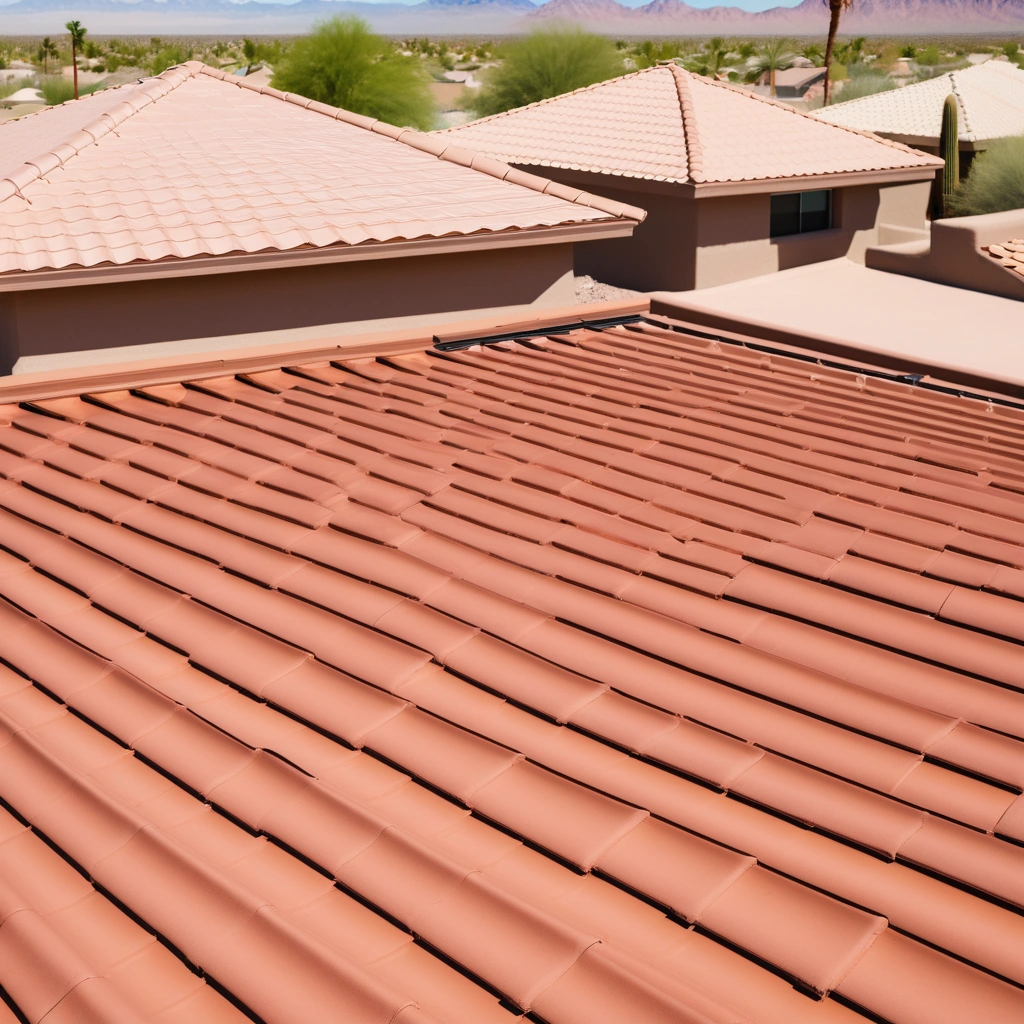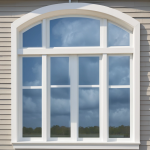Top Roofing Materials for Hot Climates: Why Certain Roofs Are More Energy Efficient in Arizona
Beating the Heat: Choosing the Right Roof for Arizona’s Climate
Arizona, with its relentless sun and scorching temperatures, presents a formidable challenge for homeowners seeking comfortable and energy-efficient living spaces. The roof, often relegated to the realm of mere structural necessity, is in reality a critical component in mitigating heat gain and minimizing energy consumption. Selecting the appropriate roofing material transcends simple aesthetic considerations; it represents a strategic investment in your home’s long-term resilience, thermal performance, and overall value. In the context of Climate-Specific Exterior Material Selection, the choice of roofing directly impacts a home’s ability to withstand extreme weather conditions while optimizing energy use.
This article delves into the leading roofing materials tailored for hot climates, specifically examining their performance characteristics and suitability for Arizona’s unique environmental demands. The significance of roofing material extends beyond mere protection from the elements; it directly influences the energy load on cooling systems. In Arizona, where air conditioning units labor relentlessly during the extended summer months, a poorly chosen roof can dramatically increase energy bills. According to the Arizona Department of Energy, homes with dark-colored, heat-absorbent roofing can experience attic temperatures as high as 150-160°F, leading to significant heat transfer into the living space.
Conversely, energy-efficient roofing materials, such as those with reflective coatings or high thermal mass, can reduce attic temperatures by as much as 50-70°F, substantially decreasing the demand on air conditioning systems. This reduction not only translates to lower utility bills but also contributes to a smaller carbon footprint, aligning with broader sustainability goals. Understanding the principles of Energy-Efficient Window Technologies Explained, such as low-E coatings and proper insulation, is crucial, but it’s equally important to recognize that a high-performing roof is the first line of defense against solar heat gain.
Beyond energy efficiency, the durability and longevity of roofing materials are paramount in Arizona’s harsh climate. The intense UV radiation, coupled with extreme temperature fluctuations, can degrade roofing materials over time, leading to cracks, leaks, and premature failure. Therefore, selecting materials that are specifically designed to withstand these conditions is essential for long-term cost savings and peace of mind. For example, while traditional asphalt shingles may offer an initial cost advantage, their lifespan can be significantly reduced in Arizona’s climate compared to more durable options like tile or metal.
Furthermore, proper installation and maintenance are crucial for maximizing the lifespan of any roofing material. Regular inspections, prompt repairs, and appropriate ventilation can help prevent moisture buildup, deter pest infestations, and ensure that the roof continues to perform optimally for years to come. Exterior Home Protection Strategies should always include a focus on robust roofing solutions tailored to the regional climate. This exploration of Top Roofing Materials for Hot Climates will highlight the specific attributes that make certain materials superior choices for Arizona homeowners.
We will analyze the thermal properties, reflectivity, durability, and cost-effectiveness of various roofing options, providing a comprehensive guide to making informed decisions. From the classic coolness of tile roofing to the modern efficiency of reflective metal, and even the advancements in cool asphalt shingles, we will examine the pros and cons of each material, empowering homeowners to select the best roofing solution for their individual needs and budget. The subsequent sections will delve into the specifics of each roofing type, supported by data and expert insights to ensure a thorough understanding of the factors influencing roofing performance in hot climates.
Tile Roofing: Classic Coolness and Enduring Durability
Tile roofs, particularly those made from clay or concrete, are a popular choice in Arizona for good reason. Their inherent thermal mass provides excellent insulation, slowing down the transfer of heat into the home during the day and releasing it slowly at night. This ‘thermal lag’ effect helps to regulate indoor temperatures and reduce the need for excessive air conditioning. Tile roofs also boast exceptional durability, with lifespans often exceeding 50 years. Their resistance to fire and strong winds makes them a reliable option in Arizona’s challenging environment.
However, tile roofs can be expensive to install and may require specialized structural support due to their weight. Beyond the basic benefits, the specific type of tile significantly impacts energy efficiency. For instance, light-colored clay tiles reflect more sunlight than darker shades, further minimizing heat absorption. Proper installation techniques, such as ensuring adequate ventilation beneath the tile, are also crucial. This ventilation allows hot air trapped under the tiles to escape, preventing it from radiating into the attic and subsequently into the living space.
Homeowners should also consider the tile’s solar reflectance index (SRI), a measure of how well a surface reflects solar energy and releases heat; higher SRI values indicate better cool roof performance. When comparing roofing materials, tile consistently ranks high for its ability to reduce energy consumption in hot climates like Arizona. Furthermore, the long-term cost-effectiveness of tile roofing must be weighed against the initial investment. While the upfront expense can be considerable, the extended lifespan and reduced energy bills often result in significant savings over time.
Unlike asphalt shingles, which may require replacement every 15-20 years, a well-maintained tile roof can last for half a century or more, making it a sustainable and economically sound choice. This longevity also minimizes waste and reduces the environmental impact associated with frequent roof replacements. In terms of exterior home protection strategies, tile roofs provide exceptional defense against the elements, safeguarding the structure from extreme weather conditions. Finally, integrating tile roofing with other energy-efficient home technologies can maximize overall performance.
Pairing a tile roof with energy-efficient windows and proper insulation creates a synergistic effect, further reducing energy consumption and enhancing indoor comfort. For example, low-emissivity (low-E) windows minimize heat gain from sunlight, complementing the tile roof’s ability to reduce heat transfer from above. Similarly, adequate attic insulation prevents heat from escaping during the winter months and entering during the summer, optimizing the home’s overall energy efficiency. Consulting with a qualified roofing contractor and energy efficiency expert can help homeowners select the ideal combination of materials and technologies for their specific needs and budget, ensuring a comfortable and energy-efficient home environment.
Reflective Metal Roofing: A Modern Approach to Energy Efficiency
Metal roofs, once primarily associated with industrial buildings, are gaining popularity in residential applications, especially in hot climates like Arizona. Reflective metal roofs, often coated with specialized coatings like cool roof granules or advanced paint systems, can reflect a significant portion of the sun’s radiant heat, keeping the roof surface cooler and reducing heat transfer into the attic and living spaces. This high reflectivity, measured by its Solar Reflectance Index (SRI), can reach values of 70 or higher in some products, translating directly into lower cooling costs.
For example, a study by the Oak Ridge National Laboratory found that reflective metal roofs can reduce cooling energy consumption by up to 40% in hot climates compared to traditional asphalt shingles. Metal roofing presents a compelling option for homeowners seeking long-term energy savings and enhanced home protection. Beyond reflectivity, metal roofs offer a suite of benefits perfectly suited for Arizona’s demanding environment. They are inherently lightweight, placing less stress on the building’s structure compared to heavier options like tile roofing.
This is particularly advantageous in areas prone to seismic activity. Metal roofs are also exceptionally durable, boasting lifespans of 50 years or more with minimal maintenance. Their fire-resistant properties provide an added layer of safety, a crucial consideration in regions susceptible to wildfires. Furthermore, metal roofing is impervious to pests like termites, which can compromise the structural integrity of other roofing materials. The combination of durability, fire resistance, and pest resistance makes metal roofing a robust choice for exterior home protection strategies.
While the initial cost of metal roofing can be higher than some other options like asphalt shingles, a comprehensive life-cycle cost analysis often reveals its long-term value. The extended lifespan, reduced energy consumption, and minimal maintenance requirements contribute to significant savings over the roof’s lifetime. Moreover, many metal roofing products are made from recycled materials and are fully recyclable at the end of their service life, making them an environmentally responsible choice. When evaluating roofing materials for hot climates, it’s essential to consider not just the upfront cost but also the long-term performance, energy efficiency, and environmental impact. Reflective metal roofing offers a compelling combination of these factors, making it a worthwhile investment for homeowners in Arizona and similar regions.
Cool Asphalt Shingles: An Affordable Energy-Efficient Upgrade
Asphalt shingles, the reigning champion of roofing materials across the United States due to their affordability and ease of installation, present a nuanced choice for Arizona homeowners battling intense heat. While traditional asphalt shingles, known for their dark hues that readily absorb solar radiation, are far from ideal in hot climates, specialized ‘cool’ asphalt shingles offer a compelling alternative. These innovative shingles are engineered with reflective granules, typically ceramic-coated, that bounce back a significant portion of the sun’s energy, mitigating heat absorption.
The result is a roof surface that remains considerably cooler than its conventional counterpart, directly translating to reduced heat transfer into the attic and living spaces below. This is a prime example of climate-specific exterior material selection, where a simple modification to a common material yields substantial benefits in a challenging environment. The performance difference between standard and cool asphalt shingles is measurable and impactful. Studies conducted by organizations like the Cool Roof Rating Council (CRRC) demonstrate that cool asphalt shingles can achieve solar reflectance values significantly higher than standard shingles.
This translates to a noticeable reduction in attic temperatures, potentially lowering air conditioning demand and subsequent energy bills. For instance, a homeowner switching from dark grey standard shingles to a highly reflective cool shingle option could experience a decrease in roof surface temperature by as much as 50-60°F on a scorching Arizona summer day. While the energy savings might not rival those of tile roofing or metal roofing, the lower upfront cost makes cool asphalt shingles an attractive option for budget-conscious homeowners seeking to improve energy efficiency.
However, it’s crucial to acknowledge the limitations of cool asphalt shingles, particularly in the context of Arizona’s extreme climate. While they offer a cost-effective initial investment, their lifespan tends to be shorter compared to tile or metal roofs. The relentless Arizona sun, coupled with drastic temperature fluctuations, can accelerate the degradation of asphalt shingles, leading to granule loss and a gradual reduction in reflectivity over time. This necessitates more frequent replacements, potentially offsetting some of the initial cost savings. Furthermore, proper roof underlayment and ventilation are paramount when using asphalt shingles in hot climates. A high-quality synthetic underlayment provides an essential barrier against moisture intrusion, while adequate attic ventilation facilitates the escape of heat, preventing it from radiating into the living spaces. These factors are vital considerations for exterior home protection strategies and maximizing the long-term performance of asphalt shingles in Arizona.
The Importance of Underlayment and Ventilation
Roofing underlayment, the unsung hero nestled between your chosen roofing materials and the roof deck, plays a critical role in safeguarding your home against the dual threats of moisture intrusion and heat gain. In hot climates like Arizona, selecting the right underlayment isn’t merely a code requirement; it’s a strategic decision that directly impacts energy efficiency and the longevity of your entire roofing system. Choosing the right underlayment is essential for maximizing the performance of any roofing material, be it tile roofing’s classic appeal, metal roofing’s reflective prowess, or the affordability of asphalt shingles.
Think of it as the foundation upon which your roof’s energy-saving potential is built. Synthetic underlayments have emerged as a superior alternative to traditional felt, particularly in demanding environments. Generally, they exhibit greater durability, tear resistance, and water resistance, offering enhanced protection against leaks caused by wind-driven rain or ice dams (though less common in Arizona, temperature fluctuations can still create condensation issues). Furthermore, many synthetic underlayments are designed to be breathable, allowing moisture vapor from inside the attic to escape, preventing mold and mildew growth that can compromise both the structural integrity of the roof and indoor air quality.
Investing in a high-quality synthetic underlayment is a proactive step in ensuring long-term performance and preventing costly repairs down the line. Reflective underlayments represent an additional layer of defense against the Arizona sun. These specialized underlayments incorporate a reflective foil or coating that bounces radiant heat away from the attic, further reducing heat transfer into the living space. This is particularly beneficial when paired with darker roofing materials, such as certain shades of asphalt shingles, which tend to absorb more heat.
By mitigating radiant heat gain, reflective underlayments contribute significantly to energy efficiency, reducing the strain on air conditioning systems and lowering energy bills. In the context of cool roof strategies, reflective underlayment acts as a crucial component in a comprehensive system designed to minimize solar heat absorption. Proper ventilation is the final piece of the puzzle, working in tandem with the roofing materials and underlayment to create a balanced and energy-efficient roofing system. Adequate ventilation allows for the continuous circulation of air through the attic space, removing both heat and moisture.
This prevents the attic from becoming an overheated oven in the summer and reduces the risk of condensation buildup during cooler months. Effective ventilation strategies include soffit vents (located under the eaves) to allow cool air to enter and ridge vents (placed along the peak of the roof) to exhaust hot air. Optimizing ventilation not only enhances energy efficiency but also extends the lifespan of the roofing materials by preventing premature degradation caused by excessive heat and moisture exposure.
Making the Right Choice: A Summary of Roofing Options for Hot Climates
Selecting the right roofing material for your Arizona home is a decision that impacts both comfort and finances. While tile and metal roofs offer superior energy efficiency and longevity, cool asphalt shingles provide a more budget-friendly alternative. Regardless of the chosen material, proper installation, adequate ventilation, and the use of high-quality roof underlayment are essential for maximizing performance and protecting your home from the desert heat. Consulting with a qualified roofing contractor is highly recommended to assess your specific needs and determine the best roofing solution for your home.
Beyond the material itself, consider the crucial role of proper attic ventilation. In hot climates like Arizona, a well-ventilated attic can significantly reduce heat buildup, preventing it from radiating into the living spaces below. This often involves a combination of soffit vents (located under the eaves) and ridge vents (along the peak of the roof), allowing for a continuous flow of air that exhausts hot air. Insufficient ventilation can negate the benefits of even the most energy-efficient roofing materials, leading to higher energy bills and potential damage to the roof structure itself.
For instance, trapped moisture can lead to wood rot and premature shingle failure, regardless of whether you’ve opted for tile roofing or cool asphalt shingles. Furthermore, the choice of roof color plays a surprisingly significant role in energy efficiency. Lighter-colored roofing materials reflect more sunlight than darker ones, reducing the amount of heat absorbed by the roof. While a dark roof might be aesthetically appealing, it can contribute to a hotter attic and increased cooling costs.
Opting for lighter shades of tile, metal, or even cool asphalt shingles can make a noticeable difference in your home’s overall energy performance. Many homeowners in Arizona are now choosing lighter, reflective options to combat the intense summer heat and minimize their reliance on air conditioning. This simple change, combined with proper insulation and ventilation, can lead to substantial savings over the lifespan of the roof. Finally, don’t underestimate the importance of professional installation. Even the best roofing materials will underperform if not installed correctly.
A properly installed roof will not only provide superior protection against the elements but also ensure that the ventilation system functions as intended. Leaks, improper flashing, and inadequate sealing can all compromise the roof’s integrity and lead to costly repairs down the line. Investing in a reputable roofing contractor with experience in hot climates is a wise decision that will pay off in the long run, ensuring that your chosen roofing material delivers optimal energy efficiency and long-lasting protection for your Arizona home. They can also advise on the best type of roof underlayment to use, considering factors like moisture resistance and heat reflectivity, further enhancing your home’s defense against the elements.


